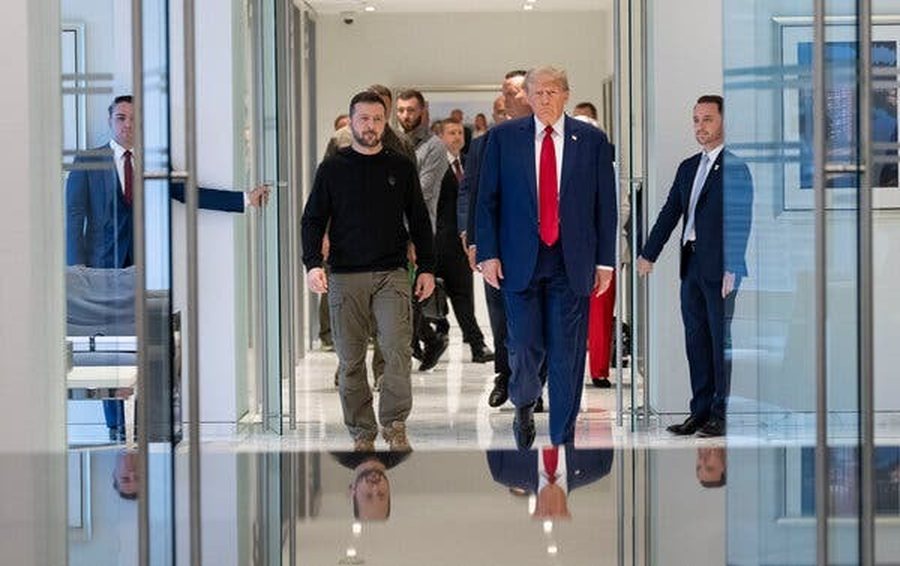How Ukraine's minerals could end China's economic support of the US?!

US President Donald Trump is seeking $500 billion (€477 billion) in rare earths and critical Ukrainian minerals in negotiating a peace deal, to compensate for US military aid to Ukraine during the war. More importantly, securing these resources fits into his strategic plan to rebalance the US’s global trade position, particularly against China. However, peace talks remain at an impasse after the US decided to halt all military aid to Ukraine following a explosive call between Trump and Ukrainian President Volodymyr Zelenskyy.
Trump has been committed to “making America great again” since his first term, targeting China with tariffs to protect its domestic manufacturing sector. However, given China’s long-established supply chain system and manufacturing infrastructure, the US faces challenges in reversing the trade relationship, particularly its dependence on China for supplies of minerals critical to its high-tech industry. This makes the peace talks a crucial turning point in Trump’s tariff plan if he is to be able to escalate measures against China’s exports.
How responsible is the US for China's critical minerals?
The US president has doubled import tariffs on Chinese goods to 20%, while continuing today with a 25% tax on its two largest trading partners. Some may wonder why Trump has not hit China with more aggressive tariffs like he has on Mexico and Canada.
The US relies heavily on China for its supply of critical minerals, which are vital resources for the production of electrical appliances, battery-powered cars, aircraft and defense equipment. According to TD Economics, China dominates global production of more than half of the 50 critical minerals outlined by the US government in 2022. In addition, it holds a near-monopoly on refining capabilities, processing 90% of rare earth elements. From 2020 to 2023, Washington imported 70% of its rare earth metals from China, according to multiple sources. That makes securing an alternative source from Ukraine a key component of Trump’s strategic plan.
In December 2024, China enacted an export ban and restrictions on several critical minerals to the United States, following new U.S. restrictions on chip exports to China the day before. Beijing banned exports of antimony, gallium, germanium and superhard materials, and tightened rules on shipments of graphite products to Washington. Gallium is a reliable and durable element used in the defense industry, while graphite is essential for the production of electric vehicles and nuclear reactors.
How could the US benefit from a mineral deal with Ukraine?
A state agency, the Geological Survey of Ukraine, estimates that about 5% of the world's critical raw materials are located in Ukraine, including millions of tons of graphite reserves, a third of Europe's lithium deposits, and 7% of Europe's titanium supplies. The country also holds significant reserves of critical metals, such as copper, zinc, silver, nickel, and cobalt. Rare earth metals consisting of 17 elements have also been found in Ukraine.
However, Russia may have occupied some of Ukraine's key mining areas and rare earth deposits since the start of the war in 2022. In addition, the lack of investment in Ukraine could prevent the country from producing the product that Trump envisions, especially in terms of processing capabilities. Industry experts also question whether Ukraine actually possesses the rare earth reserves that Trump expects.
According to Argus Media, an independent energy and commodities research firm, global estimates of rare earths range between $4 billion (€3.8 billion) and $12.5 billion (€12 billion). This makes it difficult to justify the $500 billion (€477 billion) estimate of Ukraine's mineral reserves.

"Alliance for a Greater Albania": DP formalizes coalition with 25 other parties!
The Democratic Party has filed a request to register as an electoral coalition for the May 11 parliamentary elections, although within the limits of the......

Trump imposes tariffs on Canada, Mexico, China - US starts trade war, while neighboring countries and Beijing retaliate
US President Donald Trump's new 25% tariffs on imports from Mexico and Canada took effect on Tuesday, along with a doubling of tariffs on Chinese goods to......

Vlora International Airport nearing completion - Staff required in various positions: 100 vacancies!
Vlora International Airport (VIA) announces that it is currently preparing for its opening and is looking for staff to serve in this important project, where......

How much are the major currencies being exchanged today?
The US dollar is being bought today at 94 lek and sold at 95.2 lek, starting the day at unstable values compared to the previous day according to the local......

The only diamond mine in the world open to the public: Visitors can keep any gemstone they find!
The only place in the world where the public can prospect for real diamonds in their original volcanic source, Crater of Diamonds is a unique experience that......

Britain, $2 billion for Ukraine. Funding allows purchase of 5,000 air defense missiles
The United Kingdom will provide Ukraine with a new $2 billion funding package to strengthen its defenses, allowing for the purchase of 5,000 air defense......

Gonxhja: Over 22 thousand pensioners have withdrawn the Spring Bonus throughout Albania!
The Minister of Economy, Culture and Innovation, Blendi Gonxhja, announced today that 22,718 pensioners across Albania have withdrawn their spring bonus......

The application of the new electricity price begins, Balluku: Concrete measures for more accurate billing
February marked the beginning of the application of the new electricity price for household subscribers, divided into two categories, 8.5 lek per kilowatt......





















